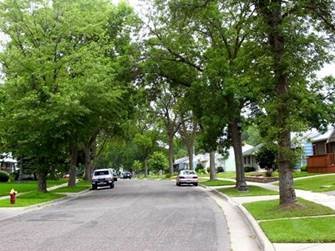Over the last couple of weeks, there has been a tremendous amount of news around the polar vortex, and the unusually frigid conditions in the upper Midwest. Temperatures were recorded in the mid-twenties below zero. Inevitably when this occurs, local stake holders debate the impact of such cold temperatures on the Emerald Ash Borer population. There is a point when the temperature drops enough, that insects overwintering as larvae may be killed, and the hope is that somehow, this will diminish the population enough to reduce the threat to our trees.
Having experienced these temperatures in past years in other states, there is some evidence that populations are temporarily diminished. Most agree that the greatest increase in insect death occurs when temperatures have been relatively mild, and then suddenly plunge well below zero. The insect seem not to be able to transition and prepare for the extreme cold. Unfortunately that is not the case with this year’s deep freeze. It was already cold when it got very cold.
Of more importance is the question of why cities continue to remove healthy, mature ash trees, when the science, and the fiscal evaluations do not support it? We know for instance that when you consider removal and replacement costs, a city can treat their healthy ash for decades, if needed, before the cost to treat equals the cost to remove and replace. Additionally, studies at Steven’s Point demonstrated that mature trees provide significantly more value to the community than replacement with saplings. Even if the plan to diversify plantings is agreed upon, it is still less expensive to do so as planted ash reach the end of their service life, rather than all at once, so costs are deferred and spread over decades.

These pictures show a suburban street on which were growing a mature stand of ash, not yet attacked by EAB which were removed as a precaution against EAB arriving. The impact on the street and neighborhood is substantial and changes the neighborhood character.

Arborjet’s treatment solution uses TREE-age insecticide. It is injected in a very small quantity, then sealed within the tree’s trunk. Protection is extremely well documented, and effective with significant ability to save trees and to protect them against future attack from EAB. Additionally, since treatment is not annual, it is highly manageable for cities whether treating in house or contracting out. TREE-age is labelled for two years of control and most cities choose to treat at even longer intervals. As each new state experiences the onslaught of EAB, it seems that we must relearn the lessons from the cities who were attacked before. Hundreds of cities have made the decision to protect their valuable urban canopy forests, to reduce impacts from increased storm water flow, and to keep their cities more livable by treating for this pest. Cities that early on believed that removal was the only solution soon found themselves with large numbers of standing dead trees, brittle and falling branches, and planting projects that could not keep pace with removals. Neighborhoods which were reliant on ash shade trees were denuded, and even when replanted will take decades before they serve to shade the community.
Financially, environmentally, and consistently, in city after city, tree injection with TREE-age has proven extremely successful at maintaining urban forest canopy, and supporting a sustainable and livable community.
To find out more about Emerald Ash Borer, please visit: Save Your Ash
